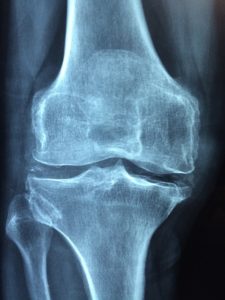 In honor of our upcoming Thanksgiving holiday, this blog is a buffet of topics I’ve collected over the past few months.
In honor of our upcoming Thanksgiving holiday, this blog is a buffet of topics I’ve collected over the past few months.
And as we close this rancorous election season, let’s peacefully reach across the table and settle the debate of what pie to serve: the piecaken will satisfy members of every culinary denomination. Enjoy your meal!
Operations Improvement?
A few months ago I stumbled across a website for a virtual physician assistant called Bright.md. Built around a structured questionnaire, this medical application allows a clinician to remotely collect routine aspects of the patient history. Bright.md figures that it’s time-saving tool can increase physician efficiency up to tenfold — meaning you could cut the typical 20 minute visit to 2 minutes.
And you thought a 15 minute appointment was short.
I can see the value of a product like Bright.md from the physician perspective, but I see little benefit for the consumer. After all, patients complain that their doctors spend too much time with them about as often as my daughters ask to turn off their iPads and go to bed.
There’s an overflow of fat to be skimmed from our health care system, no question. I’m just not sure Bright.md should be part of the cleanup crew.
Eat your Vegetables
More support for lifestyle modifications that prevent cardiovascular disease appeared in this week’s New England Journal of Medicine. Building on two decades of research showing that healthy habits — defined as not smoking, avoiding obesity, regular physical activity and a diet rich in fruits and vegetables — prevent heart disease, investigators combined four studies totaling over 55,000 patients at highest risk for coronary events.
Their findings were unequivocal: adhering to just three of the four healthy lifestyle habits reduced the risk of heart disease by almost 50%, compared to individuals who maintained an unhealthy lifestyle (no or only one good habit).
To put this in context, cholesterol “statin” medications (think lipitor, crestor, zocor and the like) reduce risk by only 25%. There’s no question that it’s easier to take a pill than follow a healthy lifestyle. But the benefits of the latter extend well beyond reducing the risk of heart disease. Exercise alone, for example, improves your sex life, sleep, mood, and cognition.
Please the Knees
Finland brought us Angry Birds, an amazingly functional and honest government, and more saunas per capita than you dreamed possible. Add to that list of gifts a growing body of evidence promoting conservative treatment of symptomatic degenerative knee cartilage tears.
Most knee cartilage tears are degenerative — in other words, not associated with a specific injury. For decades, symptomatic tears were treated with arthroscopic meniscectomy (surgical trimming of the torn cartilage), with all the attendant costs ($4 billion annually in U.S. alone) and risks associated with surgery.
In 2013, some U.S. researchers proposed that perhaps we were overtreating these joints. In a landmark study, they documented no difference between conservative (physical therapy) or invasive (arthroscopy plus physical therapy) approaches.
The Finns built on this research with another study in 2013 showing no difference between sham procedure (incisions without surgery) and traditional arthroscopy. Why the sham surgery? So patients did not know whether they were actually operated on or not.
Now they complete the hat trick with a paper involving patients with knee cartilage tears accompanied by locking or catching. Such symptoms have always been considered the gold standard for selection to surgery — the locking/catching is due to the tear, right? But here again, the Finns prove the fallibility of intuition. Patients were no worse off with sham surgery than actual removal of the torn cartilage.
Now it’s Personal
 While you are digesting your Thanksgiving feast, remember to acknowledge the bacteria that are helping with the process. Trouble is, that thank-you list just got a lot longer.
While you are digesting your Thanksgiving feast, remember to acknowledge the bacteria that are helping with the process. Trouble is, that thank-you list just got a lot longer.
Researchers at Aix Marseille Université in France have developed a new way of identifying bacteria via “a culturing approach that uses multiple culture conditions and matrix-assisted laser desorption/ionization–time of flight and 16S rRNA for identification.” Luckily some consumer-minded folks in the group rethought that description and decided “microbial culturomics” was more digestible for the layperson.
Regardless, this method allowed the French scientists to look inside the gut and identify over 1,000 different bacteria. The really impressive accomplishment: 531 of these bacteria have never before been identified in the human intestinal tract. Furthermore, 187 of these bacteria were newly-isolated in humans, and 197 strains are potentially new species. Of course, now they have to figure out what all those bugs are actually doing down there.
As we grow our knowledge of how our bacteria help (and harm) us, we’ll be in a much better position to address the wide range of diseases that we believe are influenced by those microbes, like diabetes, obesity, asthma and allergies.
Now that’s worth giving thanks for. Happy Thanksgiving!



